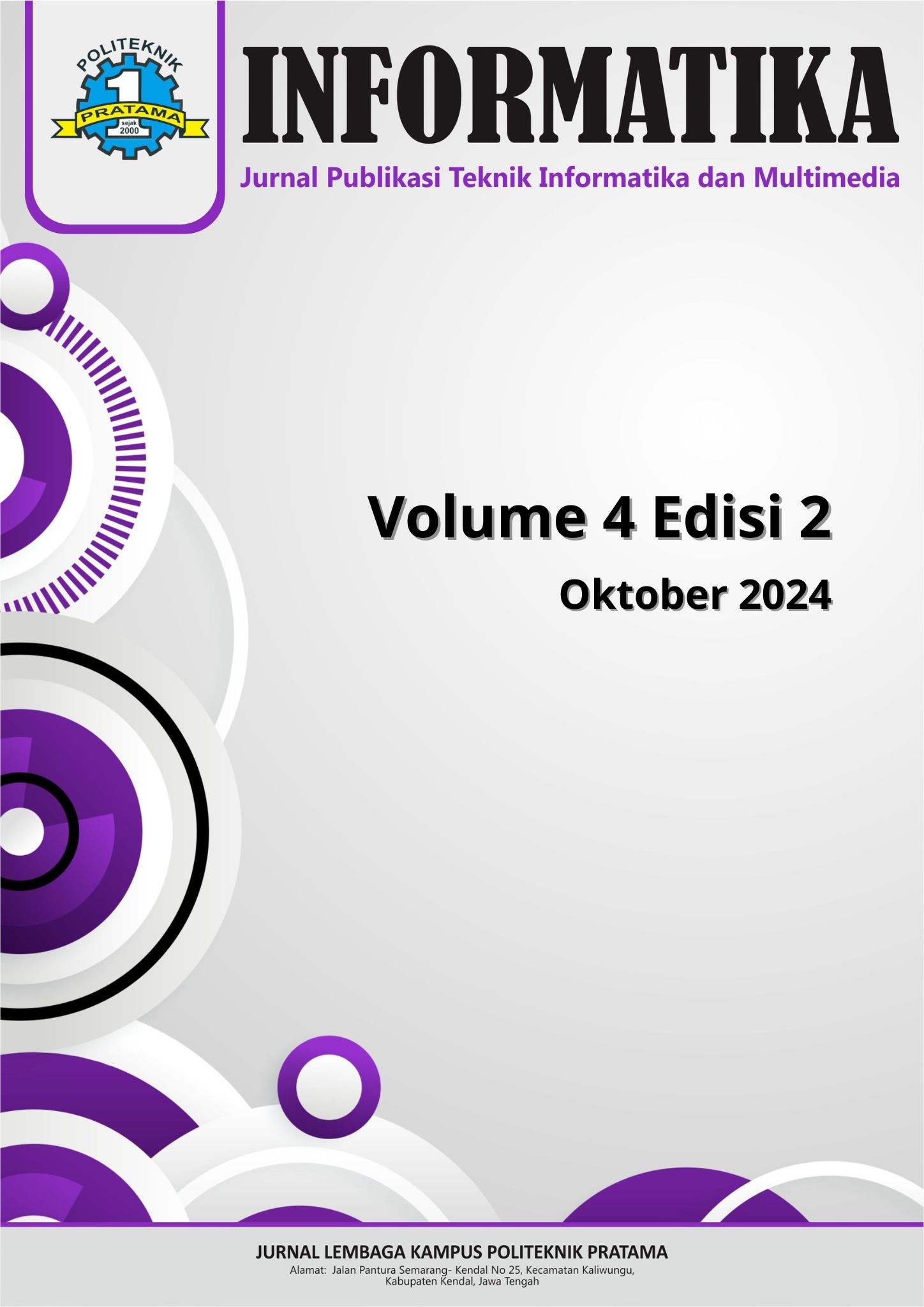PEMBANGUNAN CHATBOT INTERAKTIF DENGAN MENGGUNAKAN ALGORITMA NAIVE BAYES
DOI:
https://doi.org/10.51903/informatika.v4i2.864Keywords:
Chatbot, Naive Bayes, Python, Text Classification, ResponsivenessAbstract
Chatbots have become integral components of modern digital services, facilitating efficient and responsive interactions between users and technology. As artificial intelligence (AI) continues to shape the way businesses engage with customers, the development of interactive chatbots is increasingly essential for improving user experience. This study focuses on the implementation of the Naive Bayes algorithm to build an interactive chatbot using Python. The Naive Bayes algorithm, a simple yet powerful machine learning model, is designed to classify user input based on identified keywords or text patterns. By leveraging this algorithm, the chatbot can provide accurate and relevant responses that align with user queries. The primary goal of this study is to enhance chatbot functionality by utilizing Naive Bayes for improved classification and response generation. Python is chosen as the programming language due to its flexibility, extensive library support, and robust capabilities in handling text processing tasks. The study demonstrates that the Naive Bayes algorithm is not only efficient in terms of implementation but also highly effective in delivering personalized and contextually appropriate interactions. Additionally, it emphasizes the algorithm's speed and simplicity, making it a valuable tool for creating responsive and intelligent chatbots. Ultimately, the findings of this research suggest that Naive Bayes plays a crucial role in advancing chatbot technology by improving the accuracy and quality of responses in real-time communication.
References
[1] Ajiz, M. F., Ramadan, M. F. S., Mutia, H. D., & Yanuari, P. D. (2023). Pengembangan Aplikasi Chatbot Informasi Akademik Berbasis Web Menggunakan Metode Artificial Intelligence Markup Language (AIML). Media Jurnal Informatika, 15(2), 143-148.
[2] Putra, G. P. M., & Tenriawaru, A. (2023, November). Rancang Bangun Virtual Assistant Chatbot Menggunakan Node. Js pada Layanan Sistem Informasi Akademik. In Prosiding Seminar Nasional Pemanfaatan Sains dan Teknologi Informasi (Vol. 1, No. 1, pp. 345-352).
[3] Medvedyk, A., Lohoida, M., Rybchak, Z., & Kulyna, O. (2023). IT Slang: Development of Telegram Chatbot. In COLINS (2) (pp. 152-162).
[4] Berrar, Daniel. "Bayes' Theorem and Naive Bayes Classifier." (2019): 403-412.
[5] Setyawan, Muhammad Yusril Helmi, Rolly Maulana Awangga, and Safif Rafi Efendi. "Comparison of multinomial naive bayes algorithm and logistic regression for intent classification in chatbot." 2018 International Conference on Applied Engineering (ICAE). IEEE, 2018..
[6] Raj, Sumit, Karkal Raj, and Karkal. Building chatbots with Python. Apress, 2019.
[7] Astriyani, M., Baihaqi, W. M., & Widiawati, C. R. A. (2023, November). Development of Chatbot Features for Stunting Education Using Artificial Neural Network Algorithm. In 2023 IEEE 7th International Conference on Information Technology, Information Systems and Electrical Engineering (ICITISEE) (pp. 1-5). IEEE.
[8] Saputra, E. D., Harahap, N. S., Jasril, J., & Yusra, Y. (2024). Question Answering Al-Qur’an Menggunakan Generative Pre-Trained Transformer 3.5 Berbasis Chatbot Telegram. Jutisi: Jurnal Ilmiah Teknik Informatika dan Sistem Informasi, 13(1).
[9] Putri, Marjuniati, Daslan Josua Valentino, and Roni Andarsyah. CARA PRAKTIS MEMBUAT CHATBOT WHATSAPP. Penerbit Buku Pedia, 2023.
[10] Dewi, Riskha Dora Candra. "Early Warning System (Penggunaan Whatsapp Bot Di Bidang Kesehatan)." Bureaucracy Journal: Indonesia Journal of Law and Social-Political Governance 3.1 (2023): 10-19.
[11] Akbar, Y., & Sugiharto, T. (2023). Analisis Sentimen Pengguna Twitter di Indonesia Terhadap ChatGPT Menggunakan Algoritma C4. 5 dan Naïve Bayes. Jurnal Sains dan Teknologi, 5(1), 115-122.










.png)
